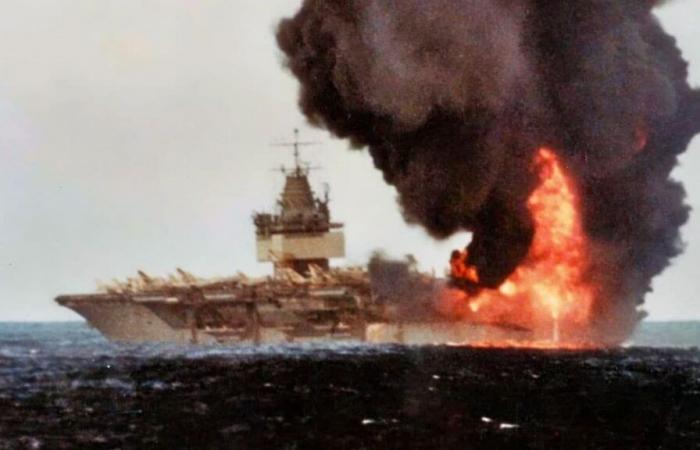The USS America, launched in 1964 and commissioned in 1965, served faithfully for more than three decades. This 82,200 ton behemoth moved an impressive amount of power:
- Length: equivalent to more than three football fields
- Speed: greater than 30 knots
- Capacity: approximately 85 aircraft
- Crew: more than 5,300 sailors
Rather than transforming it into a floating museum after its decommissioning in 1996, the US Navy decided to use this ship for an unprecedented experience. The objective was clear: to test the resistance of an aircraft carrier to simulated attacks in real conditions.
Pendant four weeksthe USS America endured a series of controlled explosions, both above and below the waterline. This test, called “SinkEx”, aimed to collect crucial data for the design of future aircraft carriers for the American fleet.
Unexpected resilience
Against all odds, the USS America revealed itself extraordinarily durable. Its double-thickness hull and compartmentalized structure contributed to its remarkable endurance in the face of repeated assaults. Some observers have even suggested that its robustness surpassed that of better armored battleships.
Vice Admiral John B. Nathman, then Chief of Naval Operations, said:
We will conduct a variety of comprehensive tests above and below the waterline, collecting data that will be used by naval architects and engineers to create the nation's future aircraft carrier fleet.
This unexpected resilience provided valuable information for the design of next-generation aircraft carriers, strengthening confidence in the survivability of these ships in the event of a real attack.
A remarkable military heritage
Before becoming a floating laboratory, the USS America enjoyed an illustrious career. Here is an overview of his feats of arms:
| Period | Engagement |
|---|---|
| Vietnam War | Three patrols off the coast |
| First Gulf War | Participation in Operations Desert Shield and Desert Storm |
The USS America was equipped with sophisticated defense systems, including RIM-7 Sea Sparrow missiles and a 20mm Phalanx close-in weapon system. Its historic first takeoff was that of an A-4C Skyhawk, marking the start of a long series of flight operations.
A unique test with lasting lessons
The experiment conducted on the USS America remains to this day one of a kind. Such a test is unlikely to be replicated, due to pressure from the public, media and Congress to preserve decommissioned aircraft carriers as museums.
Nevertheless, this exercise allowed the US Navy to acquire invaluable knowledge on the limitations of aircraft carriers in simulated combat scenarios. This information has increased confidence in the ability of these ships to withstand severe attacks, despite the growing threat from modern anti-ship missiles.
Ultimately, the USS America was sunk off the coast of Cape Hatteras, North Carolina, about 400 miles (640 kilometers) west of Bermuda, becoming the largest warship ever sunk. His sacrifice helped shape the future of the American naval powerleaving a lasting legacy in military maritime history.






